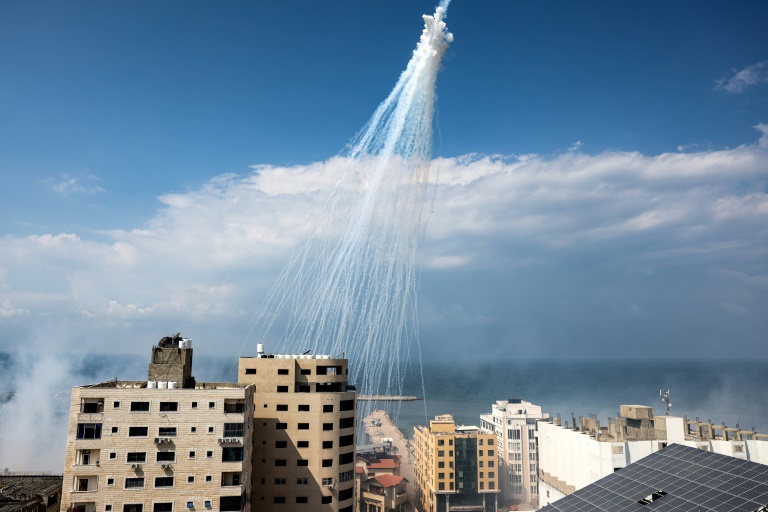Israel denies deploying phosphorus bombs in Gaza, Lebanon

Israel denies using white phosphorus in Gaza, Lebanon
Jerusalem – Israel on Friday denied accusations from rights groups that it had deployed the incendiary weapon white phosphorus in its war against Hamas militants in the densely populated Gaza Strip, after the Islamists’ deadly attack at the weekend.
“We deny those allegations, we have not made use of white phosphorus, not in Gaza and not in Lebanon,” an Israeli military spokesman said.
Israel has been pounding Hamas targets in the Gaza Strip in recent days, after the Palestinian militants stormed across its border at the weekend, killing more than 1,200 people.
Israel’s bombardment has claimed almost 1,800 lives in Gaza.
On Friday, the Israeli military urged residents in Gaza City in the north of the blockaded territory to evacuate to the south, ahead of a possible ground offensive.
Citing videos as well as interviews with two people who said they witnessed the strikes, Human Rights Watch has accused Israel of using the weapons, which can cause serious burns if they hit people.
Both interviewees described air strikes before explosions in the sky that generated stark white lines streaking downwards, said the rights group, adding that they also reported a strong smell.
The HRW statement included a photo taken by an AFP photographer of a bombardment over Gaza City’s fishing port on Wednesday.
The port is adjacent to hotels, office blocks and homes, and is an area which has repeatedly been hit with Israeli strikes this week.
Separately, Amnesty International said its team has “verified that Israeli military units striking Gaza are equipped with white phosphorus artillery rounds”.
It added in a message on social media platform X that it is investigating what it said “appears to be” the use of the incendiary weapon in Gaza, including in a strike near a hotel on the beach in Gaza City.
Phosphorus, a substance that catches fire on contact with the air, is used to create smokescreens to hide troop movements, illuminate the battlefield or destroy buildings by fire.
As an incendiary, it is not covered by the Convention on Chemical Weapons which entered into force in 1997.
However it does fall under the 1983 Convention on Certain Conventional Weapons, which restricts incendiary weapons without banning their use altogether.
While the convention outlaws their use against civilians and non-military targets as well as their deployment against military targets near civilians, it does not cover deployment for smokescreening or battlefield illumination.
A Western arms expert, who anonymously posts on X under the handle Calibre Obscura, told AFP after viewing photos that while the white trail could indicate white phosphorus, it could also be thermite.
A mixture of powered aluminium and iron oxides, thermite burns at temperatures as high as 2,500 degrees Celsius (4,500 degrees Fahrenheit).
“These are technically smoke screen shells although I can’t necessarily tell you what is used to make the smoke screen. Thermite and WP look actually quite similar”, said the expert.
